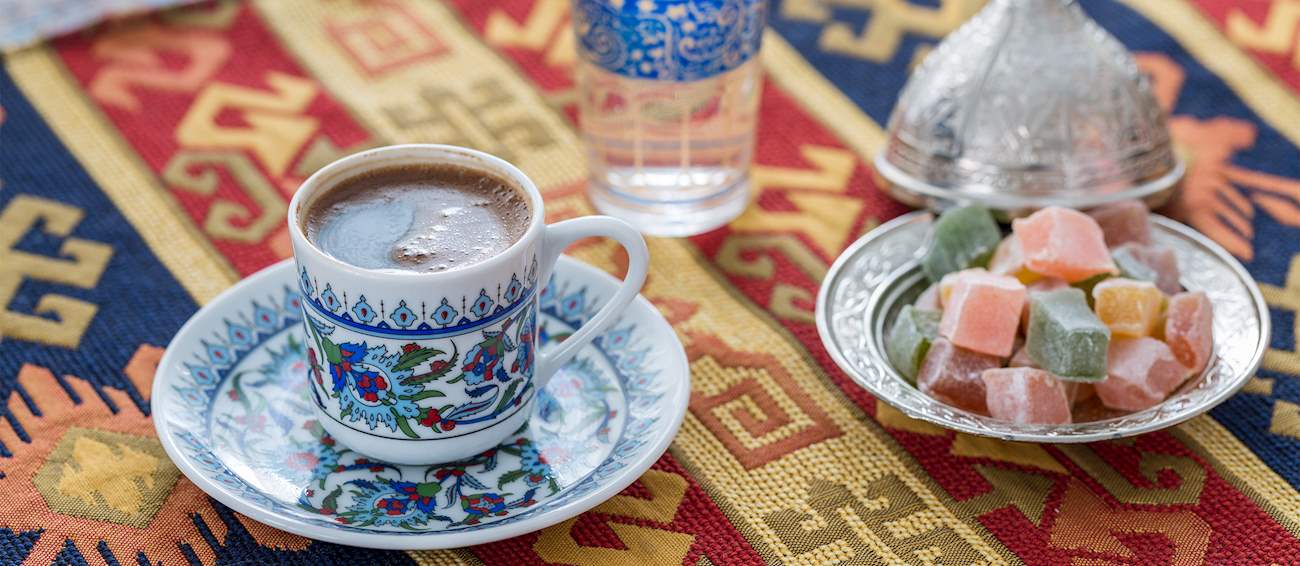(Turkish coffee, Greek coffee, Cypriot coffee)
Extra finely ground roasted coffee beans are combined with cold water (and, optionally, sugar) in a traditional coffee pot called cezve or ibrik, and then brewed over low heat until frothy and on the verge of coming to a boil, yielding a uniquely strong and rich Turkish coffee.
It is this specific method of brewing the beverage that distinguishes this coffee from other coffee types, and it has been attributed to the Turks, hence the name. When prepared properly, Turkish coffee is characterized by a dark color, thick foam on the surface, homogenous consistency, and a strong flavor with notes of bitterness.
Believed to be one of the oldest methods of coffee preparation, this coffee is often flavored with aromatic spices such as cinnamon, cardamom, or mastic, and it is typically consumed from demitasse cups accompanied by a glass of water and a sweet dessert such as Turkish delight or any homemade or store-bought dessert. Read more
Lightly roasted or medium roasted Arabica beans are most commonly used in Turkish coffee preparation; nevertheless, the coffee can be made with any coffee beans, and there are numerous regional varieties of it in Türkiye. Apart from Türkiye, Turkish coffee is enjoyed daily in many other countries around the world (especially in the Balkan), and it has been a part of UNESCO’s Intangible Cultural Heritage List since 2013, due to its unique preparation and tradition, as well as the significance it has to the country’s social and cultural life.
In Greece, Turkish coffee has been called Turkish coffee until there was a conflict with Türkiye and the 1974 invasion of Cyprus, when it started to be called Greek or Cypriot coffee, but the drink itself remained unchanged.





